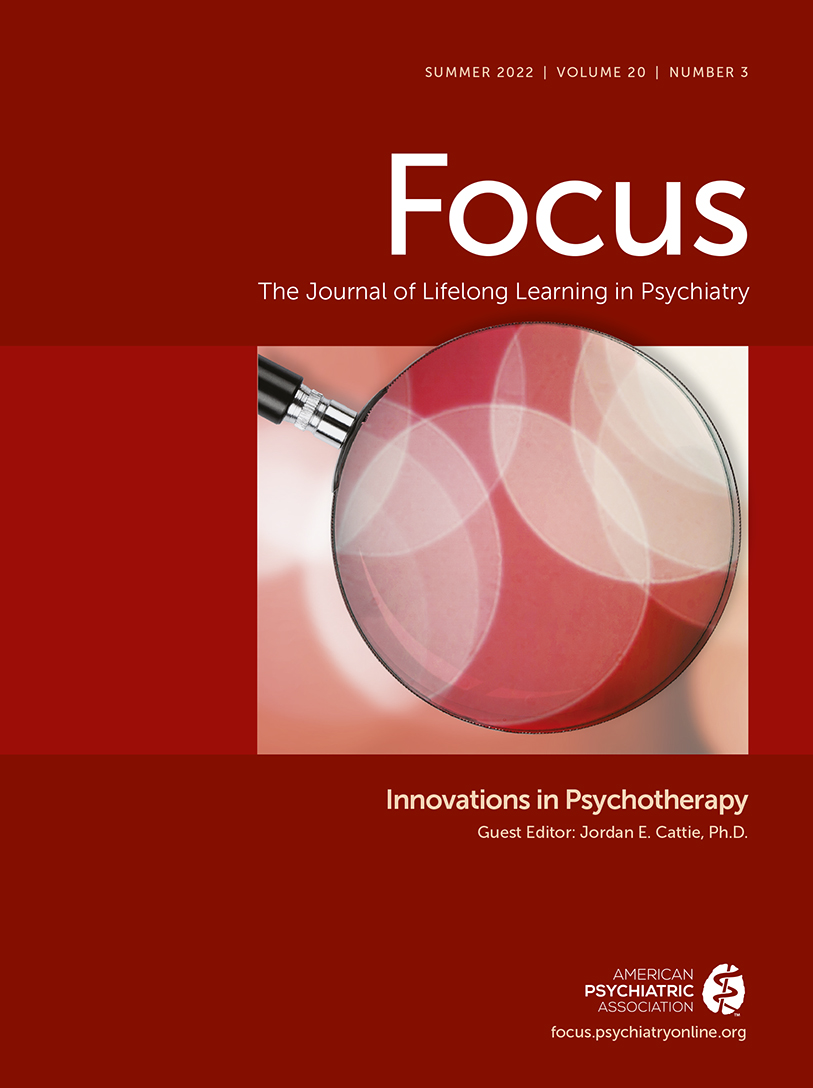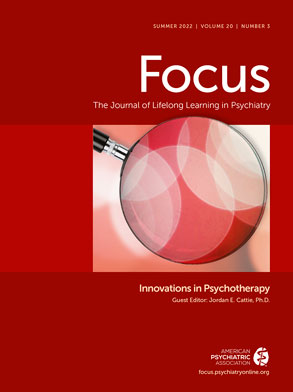Through the Lens: Telepsychotherapy and the Working Alliance
Before every session, I take a moment to remember my humanity. There is no experience that this man has that I cannot share with him, no fear that I cannot understand, no suffering that I cannot care about, because I too am human.—Carl R. Rogers
Clinical Vignette
Considerations for Telepsychiatric Sessions
| Advantages | Disadvantages |
|---|---|
| Good therapeutic alliance (most studies report alliance on par with face-to-face therapy) | Some individuals and therapists engage more fully in person |
| Some patients are more comfortable and forthcoming online and in their own homes | Some patients are uncomfortable on video or have difficulty navigating the platform |
| Convenient; no travel time | No separate safe space for therapy |
| Provides access to psychotherapy for those who are unable to travel to a therapist’s office | Some clients may not have reliable Internet service |
| Many insurance carriers offer coverage | Some insurance carriers do not cover telehealth psychotherapy or will discontinue coverage after the COVID-19 exception lapses |
| Therapists may gain extra compensation and flexibility of schedule by providing teletherapy to individuals in other states | Some states require a separate license for every state in which a therapist provides services |
| Clinicians may not need an office outside of their home—convenient and saves on overhead | More difficulty separating work and home life and potentially fewer boundaries for therapist well-being |
| May be less costly for patients because of less overhead for the therapist | Evidence on outcomes is not as robust for videoconferencing group therapy |
| Mental health treatment may be more approachable, with less stigma than going to an office | May have difficulty finding a private space for therapy; risk of Internet privacy breach |
| May be able to see more patients because of less transition time and simultaneous completion of medical documentation | May be more tiring (“Zoom fatigue”) |
| May more seamlessly integrate therapeutic exercises into the patient’s daily life | Cannot read body language and match affect as effectively |
| Allows the therapist to get a glimpse into how the patient lives | More difficult to respond to a psychiatric crisis |
| Office building security is not a concern | May be easier to cross professional boundaries (more informal) |
| Allows psychotherapy access to those in rural and remote areas | Distant therapists may not understand local culture |
| Allows for therapist flexibility and home errands between patients | Less clear distinction between work and home life |
Tips for Conducting Sessions Via Videoconferencing
References
Information & Authors
Information
Published In
History
Keywords
Authors
Funding Information
Metrics & Citations
Metrics
Citations
Export Citations
If you have the appropriate software installed, you can download article citation data to the citation manager of your choice. Simply select your manager software from the list below and click Download.
For more information or tips please see 'Downloading to a citation manager' in the Help menu.
View Options
View options
PDF/EPUB
View PDF/EPUBLogin options
Already a subscriber? Access your subscription through your login credentials or your institution for full access to this article.
Personal login Institutional Login Open Athens loginNot a subscriber?
PsychiatryOnline subscription options offer access to the DSM-5-TR® library, books, journals, CME, and patient resources. This all-in-one virtual library provides psychiatrists and mental health professionals with key resources for diagnosis, treatment, research, and professional development.
Need more help? PsychiatryOnline Customer Service may be reached by emailing [email protected] or by calling 800-368-5777 (in the U.S.) or 703-907-7322 (outside the U.S.).

